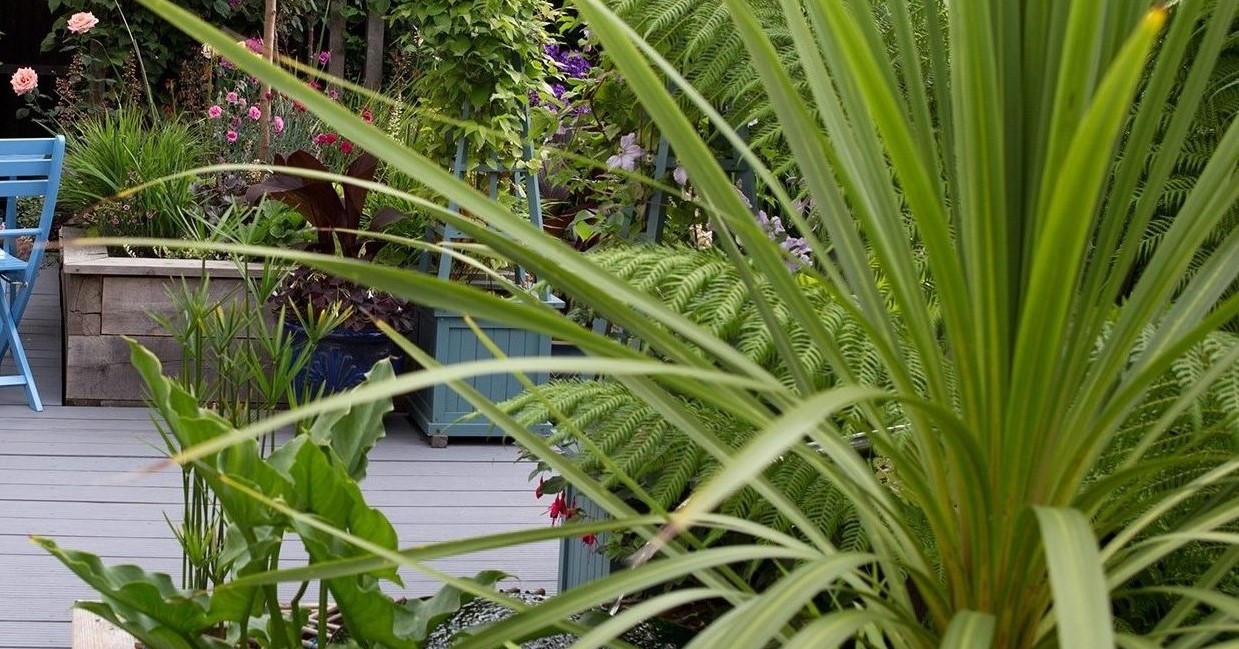
Cordyline, commonly known as the “Ti plant,” is a fascinating and versatile plant that is celebrated for its stunning tropical foliage and unique characteristics. Native to Southeast Asia, Australia, and the Pacific Islands, cordylines have gained immense popularity worldwide for their aesthetic appeal and ability to thrive in a wide range of environments.
In this article, we will delve into 18 astonishing facts about cordyline that will leave you in awe of this remarkable plant. From its vibrant foliage colors to its medicinal properties, cordyline continues to captivate both gardening enthusiasts and nature lovers alike. So, let’s embark on a journey to unravel the wonders of cordyline and discover what makes it such a beloved addition to gardens and indoor spaces around the globe.
Key Takeaways:
- Cordyline is a vibrant, low-maintenance tropical plant that brings good luck and acts as a natural air purifier, making it a perfect addition to any garden or indoor space.
- With its stunning foliage and versatile nature, Cordyline is a symbol of good fortune, attracting butterflies and hummingbirds while thriving in both outdoor landscapes and indoor settings.
Cordyline is a tropical plant
Cordyline, also known as Ti plant or Cabbage Palm, is a tropical plant that is native to Southeast Asia, Australia, and the Pacific Islands.
There are over 20 different species of Cordyline
There is a wide variety of Cordyline species, each with its own unique characteristics and appearance. Some popular species include Cordyline fruticosa, Cordyline australis, and Cordyline terminalis.
Cordyline is known for its vibrant foliage
The leaves of the Cordyline plant come in a range of colors, including green, red, pink, purple, and variegated combinations. This adds a tropical touch to any garden or indoor space.
Cordyline is easy to grow
Cordyline is a low-maintenance plant that is relatively easy to grow. It thrives in well-draining soil and prefers bright, indirect sunlight.
Cordyline is a popular landscape plant
Due to its attractive foliage, Cordyline is often used as a decorative plant in outdoor landscapes, gardens, and tropical-themed settings.
Cordyline is drought-tolerant
This plant is known for its ability to survive in dry conditions. It has adapted to store water in its leaves and roots, making it a suitable choice for arid climates.
Cordyline has medicinal properties
In traditional medicine, the leaves and roots of Cordyline plants have been used to treat various ailments, including inflammation, pain, and skin conditions.
Cordyline thrives in containers
Due to its compact size and ornamental value, Cordyline is a popular choice for container gardening. It can be grown indoors or on balconies and patios.
Cordyline is a symbol of good luck
In some cultures, Cordyline plants are considered to bring good fortune and luck to the household. It is often used in rituals and ceremonies.
Cordyline is a natural air purifier
Like many other plants, Cordyline helps to improve indoor air quality by absorbing harmful toxins and releasing oxygen.
Cordyline can be propagated through stem cuttings
If you want to grow more Cordyline plants, you can easily propagate them by taking stem cuttings and rooting them in water or moist soil.
Cordyline flowers are small and inconspicuous
While the foliage of Cordyline is the main attraction, the plants do produce small, fragrant flowers. However, these flowers are often overshadowed by the vibrant leaves.
Cordyline attracts butterflies and hummingbirds
The nectar produced by Cordyline flowers attracts pollinators such as butterflies and hummingbirds, adding an extra element of beauty to your garden.
Cordyline is deer-resistant
Unlike many other plants, Cordyline is not a preferred food source for deer. This makes it a great option for gardens in areas with deer populations.
Cordyline can be used in culinary preparations
Some cultures use the young shoots and leaves of Cordyline in traditional dishes, either raw or cooked.
Cordyline can be grown indoors as a houseplant
Due to its tolerance for indoor conditions, Cordyline can thrive as a houseplant, adding a touch of tropical elegance to any interior space.
Cordyline can live for several decades
With proper care, Cordyline plants can live for many years, often reaching heights of up to 10 feet or more.
Cordyline is a versatile plant
Whether used as a focal point in a garden, a potted plant on a patio, or an indoor houseplant, Cordyline brings beauty and tropical vibes wherever it is planted.
Conclusion
In conclusion, Cordyline is a fascinating plant with a rich history and amazing benefits. From its diverse species to its stunning foliage and medicinal properties, Cordyline has captivated plant enthusiasts and health enthusiasts alike. Whether you are looking to add a unique touch to your garden or want to harness the potential health benefits, Cordyline is definitely worth considering. Remember, while Cordyline is generally easy to care for, it’s important to do your research and provide the right conditions for optimal growth. So go ahead and embark on your Cordyline journey, and enjoy the beauty and wonder this extraordinary plant has to offer!
FAQs
Q: What are the different species of Cordyline?
A: There are several species of Cordyline, including Cordyline fruticosa, Cordyline terminalis, and Cordyline australis. Each species has its own unique characteristics and is native to different regions.
Q: Can Cordyline plants be grown indoors?
A: Yes, Cordyline plants can be grown indoors as long as they are placed in a well-lit area away from direct sunlight. They can thrive in pots and make excellent additions to indoor gardens or as decorative accents in homes and offices.
Q: How often should I water my Cordyline plant?
A: Cordyline plants prefer slightly moist soil, so it’s important to water them regularly. However, it’s crucial not to overwater as it can lead to root rot. A good rule of thumb is to water the plant when the top inch of soil feels dry.
Q: Do Cordyline plants require special care?
A: Cordyline plants are relatively low-maintenance but thrive in well-draining soil and moderate temperatures. They prefer partial shade to full sun and benefit from occasional fertilization to promote healthy growth.
Q: Are Cordyline plants toxic to pets?
A: Yes, certain species of Cordyline, such as Cordyline fruticosa, can be mildly toxic to pets if ingested. It’s essential to keep them out of reach of curious pets to prevent any health issues.
Cordyline's a fascinating plant, but there's so much more to explore in the world of greenery. Dive into the captivating realm of 20 Facts About Plants and uncover astonishing facts that'll leave you in awe. From the vibrant colors of tropical plants like bromeliads to the incredible benefits of houseplants, nature never ceases to amaze. Whether you're a seasoned plant enthusiast or just starting your journey, get ready to be inspired by the wonders that await you.
Was this page helpful?
Our commitment to delivering trustworthy and engaging content is at the heart of what we do. Each fact on our site is contributed by real users like you, bringing a wealth of diverse insights and information. To ensure the highest standards of accuracy and reliability, our dedicated editors meticulously review each submission. This process guarantees that the facts we share are not only fascinating but also credible. Trust in our commitment to quality and authenticity as you explore and learn with us.


